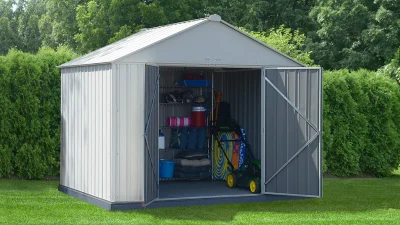Transitioning to a new home involves numerous steps beyond the physical relocation of your belongings. The process typically begins several months before your actual moving date, requiring careful planning and coordination with various service providers. Most homeowners underestimate the time needed for properly preparing their current home for sale while simultaneously searching for and securing a new residence. Documentation requirements can be extensive, including transfer of utilities, address changes, property inspections, and mortgage paperwork that demand attention well before moving day. The emotional aspects of home transitions are equally significant, as leaving familiar surroundings and establishing connections in a new community represent major life changes that deserve acknowledgment and preparation.
Essential Home Systems Inspection After Moving
The immediate post-move period presents an ideal opportunity to thoroughly assess all major home systems before fully settling in. Heating systems require particular attention, as their condition affects both comfort and safety, with potential issues ranging from inefficient operation to dangerous carbon monoxide leaks. Electrical systems should undergo professional inspection to identify outdated wiring, insufficient capacity, or safety hazards that previous homeowners might have overlooked or failed to disclose.
Plumbing networks often harbor hidden problems like slow leaks, improper drainage, or aging pipes that could lead to significant damage if left unaddressed after your move. Water quality testing is frequently overlooked but remains critically important, particularly when transitioning between municipalities with different water treatment protocols or when moving to properties with well water systems.
Finding Qualified Heating Installation and Service Providers
Heating system evaluation and potential replacement represent significant considerations when moving into a new home, particularly in regions with extreme temperature variations. Professional HVAC technicians should assess your existing system’s age, efficiency rating, maintenance history, and compatibility with your home’s size and your family’s comfort preferences. Modern heating technologies offer substantial improvements in energy efficiency, potentially reducing utility costs by 20-30% compared to systems installed even just a decade ago.
Reputable heating service providers can be identified through professional organizations that maintain directories of qualified professionals. Local building departments, home inspection companies, and neighborhood social media groups can provide recommendations based on area-specific knowledge of reliable heating service companies with proven track records—you can check out the site of an HVAC company to find certified professionals.
Selecting the Right Moving Company for Your Needs
The moving company you choose significantly impacts the stress level and success of your relocation experience. Professional movers offer various service levels, from basic transportation-only packages to comprehensive options including packing, unpacking, and specialized handling of valuable or fragile items. Experience with your specific type of move matters considerably, whether you’re relocating internationally, crossing state lines, or moving within the same neighborhood with unique access challenges.
Legitimate moving companies, such as Esea Van Lines, maintain proper licensing for interstate moves or appropriate state-level credentials for local relocations, along with adequate insurance coverage protecting your possessions. Written estimates should detail all potential costs, including base rates, additional fees for stairs or long carries, packing materials, storage needs, and specialty item handling requirements.
Creating a Post-Move Home Improvement Timeline
Approaching home improvements methodically after moving prevents financial strain and renovation fatigue while allowing you to prioritize projects based on necessity and impact. Safety-related improvements should top your list, addressing issues like radon mitigation, mold remediation, structural concerns, or outdated electrical systems before tackling cosmetic updates. Seasonal considerations affect optimal timing for certain projects, with exterior painting best scheduled during moderate temperatures and low humidity, while HVAC replacements might be more affordably completed during off-peak seasons.
Energy efficiency upgrades often qualify for tax incentives, utility rebates, or financing programs that change annually, making research into current programs an important factor in timeline development. Staggering major renovation projects allows you to maintain livable conditions throughout your home while giving appropriate attention to design decisions without feeling rushed.
Managing the Administrative Aspects of Relocation
The paperwork associated with changing residences extends well beyond your moving company contract and requires systematic attention to numerous details. Address changes should be filed with the postal service, financial institutions, insurance providers, government agencies, subscription services, and professional organizations to prevent disruption of important communications.
Insurance policies often need adjustment when moving, potentially including changes to homeowner’s coverage based on new property characteristics, updated auto insurance reflecting your new commute or parking situation, and specialized coverage for valuable items during transit. School transfers involve records requests, enrollment procedures, potential placement testing, and familiarization with new educational environments and requirements that should be initiated well before your move date. Employment-related documentation may include updating payroll information, adjusting tax withholding forms, and transferring professional licenses or certifications to your new jurisdiction.
Addressing Technology and Connectivity Requirements
Establishing reliable technology services ranks among the most immediate needs when entering a new home, yet often involves unexpected complications and scheduling challenges. Internet service options vary dramatically by location, with research into available providers, connection types, speeds, reliability records, and contract terms ideally completed weeks before your arrival. Smart home technology compatibility deserves consideration during transition planning, as systems controlling security, lighting, temperature, and entertainment may require professional reconfiguration or replacement when moving between properties.
Home office setups frequently necessitate specialized attention to connectivity, including consideration of wired network points, secure Wi-Fi configuration, and appropriate electrical capacity for professional equipment. Television and entertainment services should be researched in advance, comparing satellite, cable, and streaming options available at your new address while accounting for potential installation wait times during busy moving seasons.
Moving to a new home represents one of life’s most significant transitions, combining logistical challenges with exciting opportunities for fresh beginnings. Breaking down this complex process into manageable components helps you navigate each aspect with greater confidence and reduced stress. Professional service providers play crucial roles throughout your relocation journey, from the moving company that transports your belongings to the HVAC technicians who evaluate your heating system.
Planning several months ahead gives you adequate time to research options, schedule services, and address unexpected complications that inevitably arise during home transitions. Remember that a successful move isn’t measured by perfection but by how effectively you adapt to and resolve the various situations you encounter along the way. Your new house transforms into a true home gradually as you address both practical necessities and personal preferences, creating a comfortable environment that supports your lifestyle and aspirations.













Comments